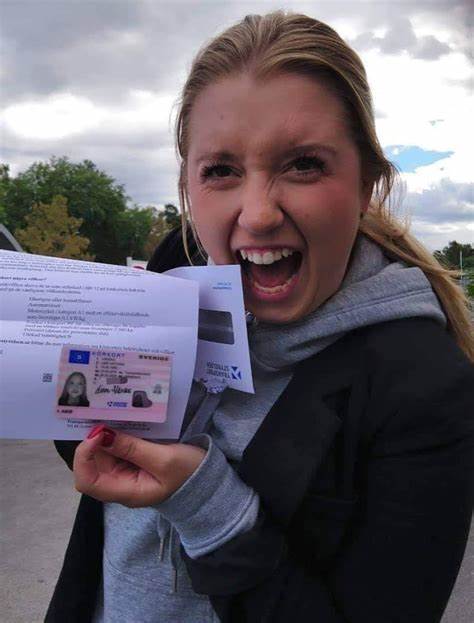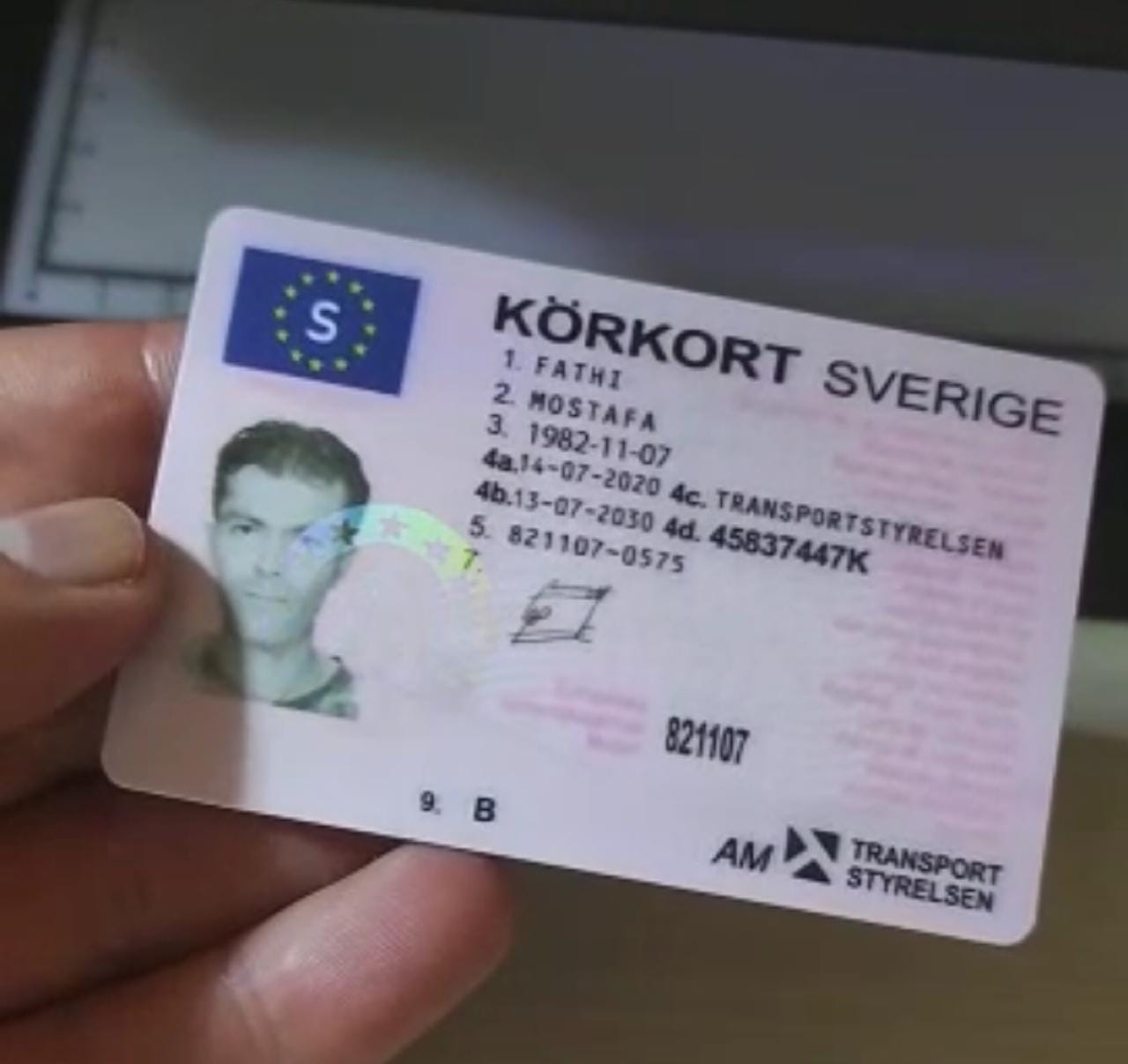How To Make An Amazing Instagram Video About Buy Taxi License Driving …
페이지 정보
작성자 Stephany 작성일25-04-20 02:18본문
Navigating the World Without a Driver's License: Exploring Alternatives and Implications
In today's world, where movement is a foundation of every day life, the concept of living without a driver's license may appear complicated. However, for some individuals, the decision to pass up a driver's license is a conscious choice driven by numerous elements, consisting of environmental concerns, Köpa taxilicens KöRkort cost, and individual preference. This short article dives into the alternatives to driving and the ramifications of living without a driver's license, providing a detailed guide for those considering this lifestyle.

Understanding the Decision
Picking not to have a driver's license is an individual decision that can originate from numerous factors. For some, it's a commitment to reducing their carbon footprint and promoting sustainable living. Others find the cost of owning and preserving a car prohibitive, while some merely choose the convenience and köpa Körkort taxilicens köpa Körkort Online - https://swedishdriverslicense79095.wikicorrespondence.com/4456683/why_you_should_concentrate_on_enhancing_buy_a_taxi_license_online_without_exams - liberty of other modes of transport. Regardless of the motivation, living without a driver's license requires mindful planning and a desire to adjust.
Alternatives to Driving
Mass transit
- Buses and Trains: Public transport systems, such as buses and trains, are often the most reliable and affordable options. They are accessible in a lot of urban areas and provide a structured way to browse cities and rural regions.
- Train and Light Rail: In bigger cities, trains and light rail systems use fast and effective travel, frequently bypassing heavy traffic and decreasing travel time.
Ride-Sharing Services
- Uber and Lyft: These popular ride-sharing apps offer on-demand transport, making it easy to get around without a car. They are particularly beneficial for late-night travel and in locations with minimal public transportation.
- Carpooling: Joining or forming carpool groups can minimize expenses and ecological impact. Lots of neighborhood platforms and apps help with carpooling for regular commutes.
Bikes and E-Scooters
- Bikes: Cycling is a healthy and environment-friendly method to take a trip, particularly for much shorter distances. Many cities have actually committed bike lanes and bike-sharing programs to encourage this mode of transport.
- Electric Scooters: E-scooters are a stylish and practical option for quick, brief trips. They are frequently offered through rental services in city areas and can be an enjoyable alternative to traditional modes of transport.
Walking and Jogging
- Strolling: For those living in walkable communities, strolling is a basic and efficient method to remain active and get around. It's totally free, needs no unique equipment, and is great for the environment.
- Jogging: Similar to walking, jogging can be a healthy and affordable way to take a trip, specifically for short ranges.
Electric and Hybrid Vehicles
- Electric Scooters and Bikes: For those who still want the benefit of a personal car however are worried about the environment, electric scooters and bikes are a practical option. They are low-maintenance and produce fewer emissions.
- Hybrid Cars: If the choice to prevent a driver's license is mainly due to environmental issues, but the requirement for a car is unavoidable, hybrid lorries provide a happy medium. They integrate traditional gasoline engines with electric motors to lower fuel usage and emissions.
Telecommuting and Remote Work
- Work from Home: Many companies now provide remote work choices, enabling staff members to work from home or other locations. This can substantially decrease the requirement for everyday travelling and the associated costs.
- Virtual Meetings: Technology has made it possible to conduct business conferences and other interactions virtually, further decreasing the need for travel.
Ramifications of Living Without a Driver's License
Financial Savings
- Reduced Vehicle Costs: Not having a car implies preventing costs such as car payments, insurance coverage, upkeep, and fuel.
- Public Transport Costs: While public transportation does have expenses, they are normally lower than those connected with owning a car.
Ecological Impact
- Lower Carbon Emissions: By preventing making use of personal cars, individuals can substantially reduce their carbon footprint, contributing to a more sustainable environment.
- Minimized Traffic Congestion: Fewer automobiles on the roadway can cause lowered traffic jam, making travel more efficient for everybody.
Health Benefits
- Increased Physical Activity: Using alternatives like strolling, jogging, and cycling can improve physical health and psychological wellness.
- Lowered Stress: Avoiding the day-to-day inconveniences of driving, such as traffic and parking, can lead to a more unwinded and worry-free lifestyle.
Social and Community Engagement
- Neighborhood Connections: Relying on public transport or ride-sharing services can promote a sense of community and social interaction.
- Assistance for Local Businesses: Walking or cycling to local organizations can assist support the regional economy and lower dependence on large, environmentally hostile corporations.
Legal and Practical Considerations
- Identification Issues: In lots of countries, a driver's license functions as a primary type of recognition. People without a license may need to bring alternative types of ID, such as a passport or state-issued ID card.
- Travel Restrictions: Without a driver's license, travel to remote locations or places with minimal public transportation can be difficult. Planning ahead and utilizing alternative transportation techniques is crucial.
FAQs
Q: How can I get around if I live in a rural area without a driver's license?
- A: In backwoods, alternatives like ride-sharing services, carpooling, and mass transit may be restricted. Think about signing up with neighborhood groups or Köpa A1 och A2 Körkort Online platforms to find local carpooling alternatives. Electric scooters and bikes can likewise be useful for much shorter ranges. In addition, many backwoods have neighborhood transportation services that can be accessed for essential journeys.
Q: Can I still take a trip internationally without a driver's license?
- A: Absolutely. A driver's license is not needed for a lot of international travel. However, you might need a passport or other types of recognition. For countries where driving is required, you can lease a car with a valid driver's license or use local transportation services.
Q: What are the best apps for KöPa A2 KöRkort Online finding ride-sharing and carpooling choices?
- A: Popular apps for ride-sharing include Uber, Lyft, and Bolt. For carpooling, Waze Carpool, Ridester, and Scoop are highly recommended. These apps frequently supply real-time information on offered rides and assist connect you with motorists heading in the very same direction.
Q: How do I handle without a driver's license if it is needed for many types of identification?
- A: In numerous locations, a state-issued ID card or a passport can serve as a main form of identification. It's also an excellent concept to carry multiple forms of ID, such as a charge card or a voter registration card, to ensure you are gotten ready for various scenarios.
Q: Are there any health threats connected with using mass transit?
- A: While public transportation can expose people to a greater risk of transmittable diseases, particularly in crowded conditions, the benefits often outweigh the dangers. Practicing good health, such as washing hands routinely and using a mask, can help mitigate these threats. Additionally, lots of public transport systems have carried out security measures to safeguard passengers.
Q: What are the ecological benefits of not driving a car?
- A: Not driving a car can substantially lower your carbon footprint. Automobiles are a significant source of greenhouse gas emissions, and by choosing for mass transit, biking, or walking, you can contribute to a healthier environment. This also helps minimize air contamination and traffic blockage, improving overall quality of life.
Living without a driver's license is a feasible and frequently helpful option for many people. By checking out and making use of alternative modes of transportation, one can save money, reduce their environmental effect, and improve their health and wellness. While there are challenges, such as navigating recognition and travel problems, the benefits frequently make the effort rewarding. Whether driven by personal values or practical factors to consider, the choice to forgo a driver's license can lead to a more sustainable and satisfying lifestyle.
Extra Resources
- Public Transport Apps: Transit, Moovit, Citymapper
- Cycling and Walking Apps: Strava, MapMyRide, Google Maps
- Neighborhood Carpooling Platforms: Waze Carpool, Ridester, Scoop
- Remote Work and Telecommuting Tools: Zoom, Microsoft Teams, Slack
By embracing these options, individuals can create a lifestyle that aligns with their values and requirements, adding to a more sustainable and connected world.

댓글목록
등록된 댓글이 없습니다.


